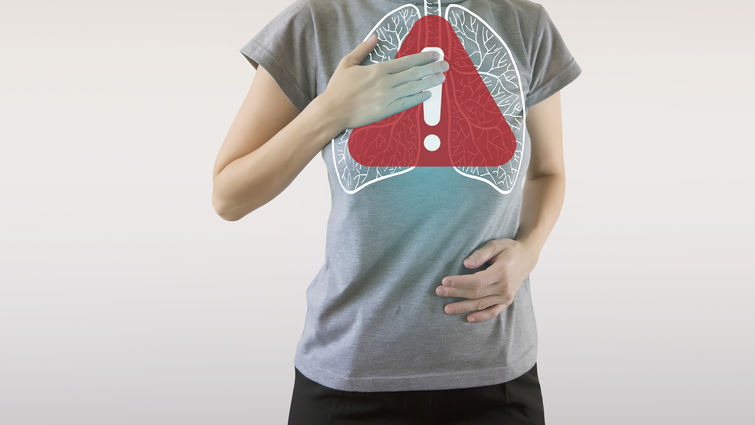
Lung disease
Cases of people contracting the novel coronavirus — COVID-19 — have reached nearly 75,000 since the disease began its spread late last year. The quick nature of transition and unknown elements of the strain have led to many questions with few answers.
Coronaviruses are not new. In fact, millions of Americans fight off these infections each year with little consequence. The term refers to a large family of viruses that are common in many different species of animals, including camels, cattle, cats and bats, according to the Centers for Disease Control and Prevention, but they do have the ability to infect humans.
Laren Tan, MD, founder and director of the Loma Linda University Health Comprehensive Program for Obstructive Airway Diseases, says it’s important for people with underlying respiratory conditions to be especially vigilant. “There is a greater concern for both infection and morbidity in those who suffer from lung diseases, such as Chronic Obstructive Pulmonary Disease and asthma.”
Tan sat down for an interview to discuss the global epidemic and what it means for people with chronic lung disease:
We know COVID-19 and other chronic respiratory infections can be dangerous, but how much greater of a risk is there for people with lung disease?
It’s tough to put a number on this, but those who are severely affected by their illness are more prone to having worsening shortness of breath, swelling in and around their lungs and life-threatening infections.
Is the risk only greater for those with COVID-19?
Those with any chronic respiratory condition who get either the common or the novel coronavirus also become more prone to getting another additional bacterial infection or virus, which increases the chances of severe illness or death. To put it simply, when you get one, your chances of getting another go up. Essentially, when it rains, it pours.
What aspect of COPD or asthma makes people more susceptible to these viral illnesses?
Patients who have chronic respiratory conditions like asthma and COPD can at times have what we call a disruption of their epithelial lining — or damage to the cellular barrier that helps to protect the lungs — making it easier for viruses and illnesses to invade the rest of the body, which makes it more prone to infection.
COVID-19 has already spread farther than SARS in 2003, and has shown little signs of stopping — how can people with lung diseases protect themselves?
The biggest thing someone can do to protect themselves is to take preventative measures to avoid getting sick in the first place. This could mean staying away from those who are actively sick, wearing a mask and gloving up when they are in a healthcare environment like clinics or hospitals, and continuing to take their prescribed respiratory conditions to optimize their lung health.
How are these viruses passed?
Viruses are dynamic in the way they infect people, animals and even plants. The risk of transmitting any virus is highest when people are sick because they are often passed through respiratory droplets — coughing, sneezing or a runny nose — passing to another person.
What should someone with a lung disease do if they’re symptomatic?
Those who haven’t recently traveled and aren’t in high-risk areas have little risk, but those who have traveled and are showing symptoms should call their primary care physician or urgent care to determine the best next steps.
People with the novel coronavirus, common coronavirus, flu or a cold would likely develop respiratory symptoms such as fever, cough and runny nose.
How can you identify whether someone has COVID-19 or another virus?
It can be tough to differentiate between respiratory viruses based on symptoms alone, since many share similar — if not identical — symptoms. That’s why we stress the importance of telling your healthcare provider the things they can’t see, like to where you’ve traveled, what you’ve eaten or who you’ve spent time with recently. If you’re showing similar symptoms, and have recently traveled to China, or another area of heightened infection, call your primary care physician, who can treat, or refer you to see a physician at the Advanced Lung Disease Center.
To learn more about the lung disease treatment options at Loma Linda University Health, visit our Advanced Lung Disease Center. For COPD or asthma treatments, see your primary care physician for a referral. Contact Loma Linda University Primary Care at 909-558-6600 or schedule an appointment online at MyChart.
